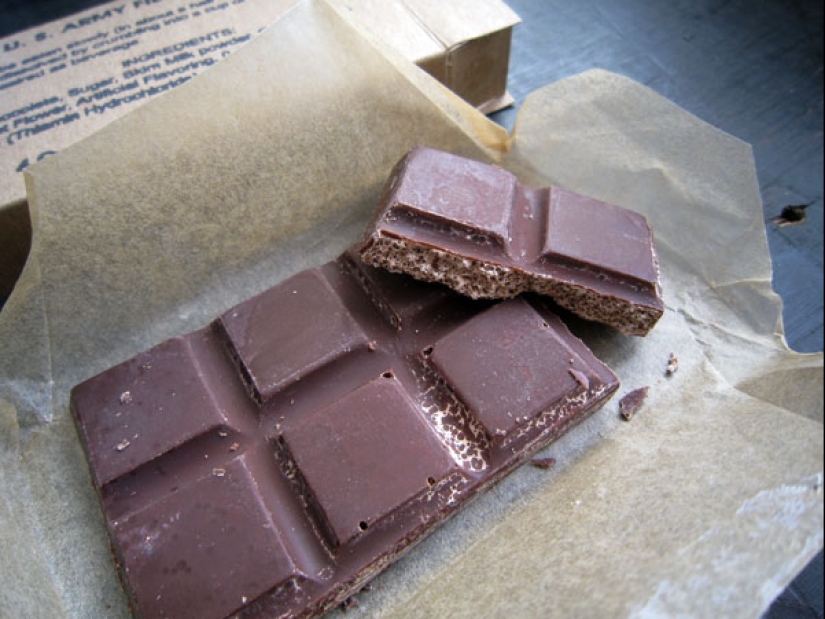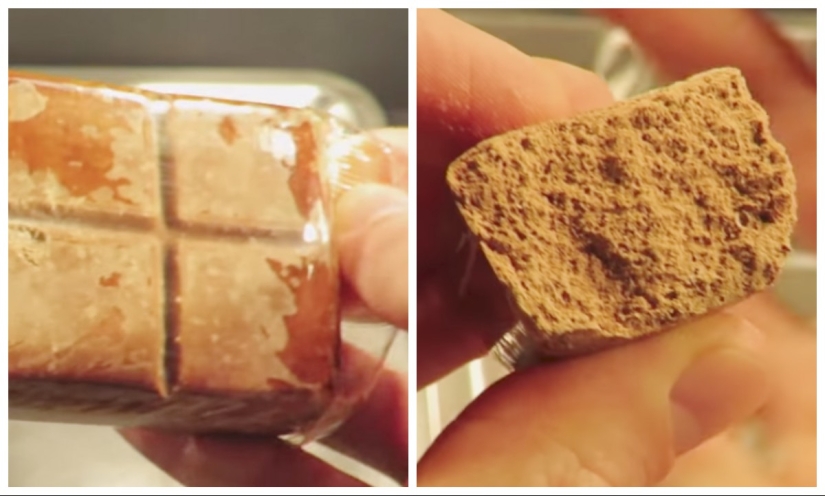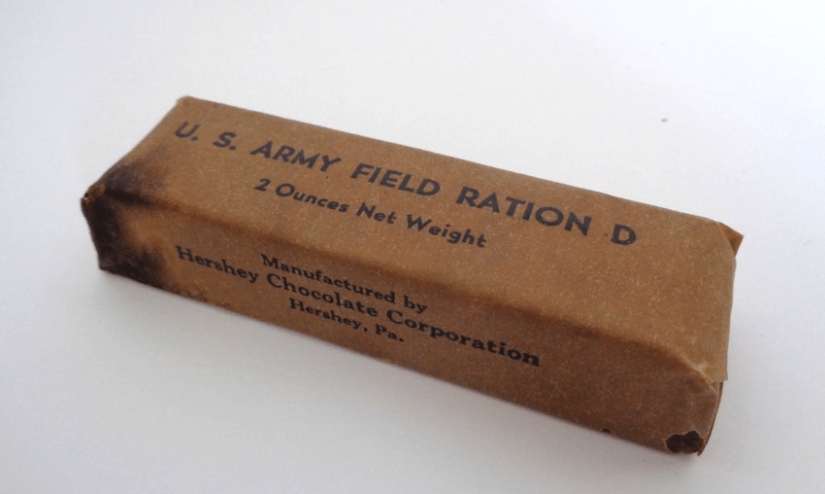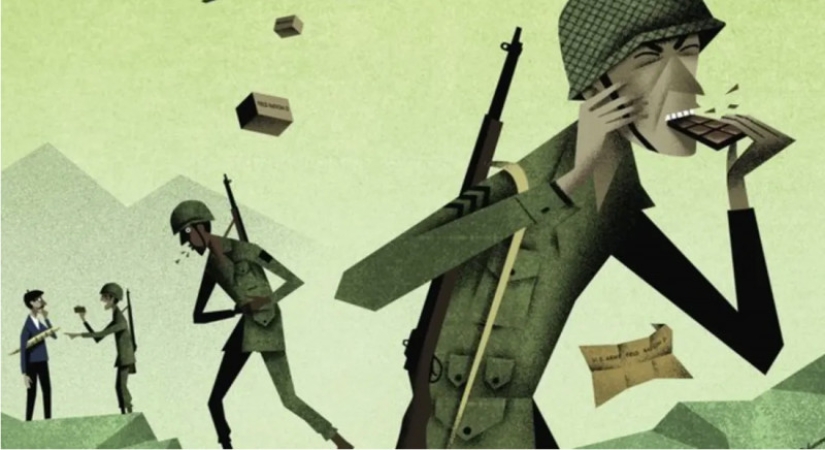"Hitler's secret weapon": disgusting chocolate that even soldiers didn't eat
Categories: Food and Drinks | History
By Pictolic https://pictolic.com/article/hitlers-secret-weapon-disgusting-chocolate-that-even-soldiers-didnt-eat.htmlThis unpresentable chocolate bar is part of the American army rations of the Second World War. We tell you why you could break your teeth on this "yummy", and the military called these tiles "Hitler's secret weapon" and preferred to throw them out of harm's way, rather than eat them.

Nutrition plays a crucial role in the conditions of a difficult military life. The combat capability of a soldier, his physical condition and morale depend on the quality of food. A weak, tired and sick soldier is unlikely to be able to prove himself well in battle, so the armies of different countries always try to ensure that the rations of the military are nourishing and rich in vitamins.
Guided by this principle, in 1937, the US Army decided to add chocolate to the diet of its soldiers. According to the idea, it was supposed to serve as an "emergency high-energy product", which would also increase the morale of the personnel. At the same time, it was not possible to add ordinary chocolate bars to the ration – they would quickly melt and deteriorate in the field. It was necessary to look for an alternative solution.

Then Army quartermaster Paul Logan turned to the company Hershey Chocolate with a request to create the "right" chocolate for the military. Among the requirements, it was indicated that the weight of one tile should not exceed 130 grams, the chocolate should withstand high temperatures and be high-calorie. It was also clarified that the taste qualities of chocolate do not matter at all. On the contrary, the less delicious it turns out, the better. Logan understood that soldiers could eat a delicious bar of chocolate right away or even use the product as a kind of" currency " for exchange.

As a result, in 1937, the Hershey company produced "it" - chocolate, called "Field diet D" or "D-Bar". It consisted of sugar, oatmeal, cocoa butter, skimmed milk powder and flavoring with vitamin B1 to prevent polyneuritis. It sounds good, but in fact, the chocolate turned out to taste so disgusting that many soldiers refused to eat it. In addition, not everyone was able to chew it: due to the addition of oat flour, the chocolate turned out to be too hard. Some soldiers broke their teeth on it, and in production they even had to use a special reinforced press to form tiles of the right size.

But the army chocolate was high-energy, just as Colonel Logan wanted. One 130-gram bar of "goodies" contained more than 600 calories.
There was an instruction attached to the tile, which stated: "Eat slowly, for half an hour. It can be dissolved in hot water and used as a drink."

Soldiers who ignored these recommendations were immediately faced with the unpleasant consequence of using such a rich product — a severe intestinal disorder. For this unpleasant side effect, chocolate was nicknamed "Hitler's Secret Weapon".
Rumors about this effect of chocolate on the body quickly reached the Hershey Chocolate Corporation. And the army began to receive complaints about "laxative chocolate". Then Colonel Logan asked Hershey to change the recipe. So there was an updated chocolate "Tropical Bar", which, although it was a little more pleasant to the taste, but remained the same solid. His soldiers also did not appreciate him and called him a "dysentery Bar".

It was only in the 50s that Hershey put into production more or less edible army chocolate. Oat flour was removed from the composition, skimmed milk was replaced with ordinary milk, and cocoa powder was added instead of cocoa butter. But even despite this, the chocolate still did not have outstanding taste qualities. Soldiers most often either threw it away or exchanged it for other products from unsuspecting civilians.
Once we told what products German soldiers never ate. Kvass, okroshka and fish were included in the list of the most unloved edibles.
Keywords: USA | War | Army | History | Chocolate | Soldiers | Diet | Interesting | Food and drinks
Post News ArticleRecent articles

In the fall of 1972, Bill Yates traveled through the countryside in the vicinity of Tampa, Florida. At that time, he was studying ...

Severe cold weather does not give up its positions. We offer you to admire the magical photos of winter Europe, because snow and ...
Related articles

In the fall of 1972, Bill Yates traveled through the countryside in the vicinity of Tampa, Florida. At that time, he was studying ...

Horror is a genre of cinema that has become a springboard into the big cinema of many venerable Hollywood actors. Laurence ...

A good sniper doesn't have to be a career soldier. This simple postulate was well understood by the Red Army soldiers who ...

Vladimir Lyubarov is an artist from the countryside who paints pictures of real life. But he brings amazing characters, birds, and ...